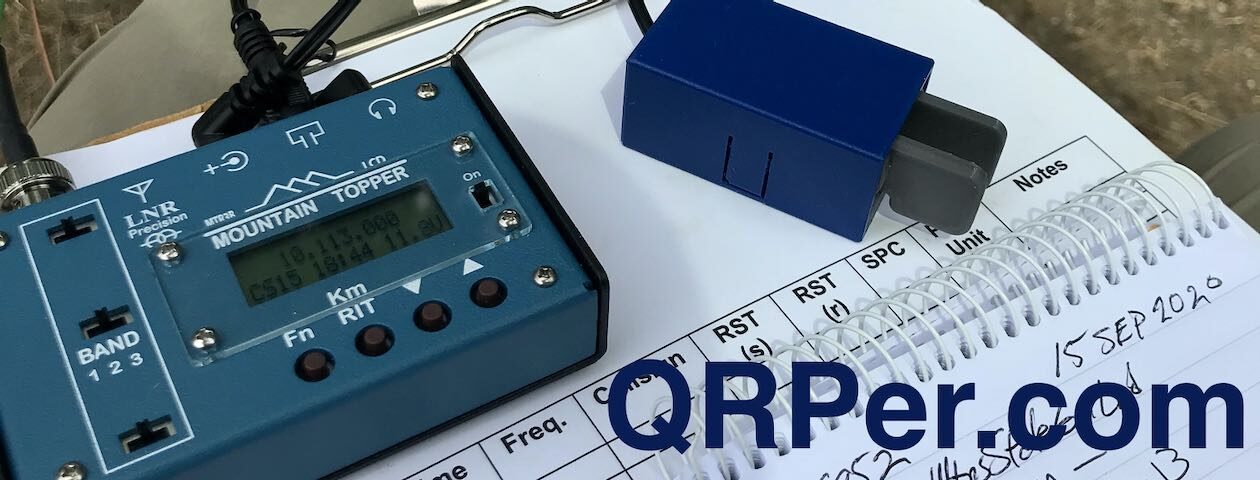 I’m very fortunate in that in the past few years I’ve accumulated a number of QRP radios that I use in rotation when I do park and summit activations.
I’m very fortunate in that in the past few years I’ve accumulated a number of QRP radios that I use in rotation when I do park and summit activations.
I’m often asked for advice on choosing radios, and as I’ve mentioned in the past, I feel like the decision is a very personal one–everything is based on an operator’s own particular preferences.
Over the years, I’ve written formal reviews about most of the field radios in my collection. In those reviews, I try to take a wide angle view of a radio–to see how it might appeal to a number of types of operators. I highlight the pros and cons, but I don’t focus on my own particular take because, again, my style of operating might not match that of readers. I try to present the full picture as clearly as I can and let the reader decide.
The Getting To Know You series gives me an opportunity to highlight one radio at a time and showcase what I love about it and why it’s a part of my permanent radio collection. After we spend a bit of time talking about the radio, we’ll do a park or summit activation with it!
The Mountain Topper MTR-3B
 The fourth radio in my Getting To Know You series is the Mountain Topper MTR-3B by LnR Precision.
The fourth radio in my Getting To Know You series is the Mountain Topper MTR-3B by LnR Precision.
And, spoiler alert: I think the MTR-3B is one of the most ingenious little QRP transceivers ever made.
In truth, all of the Mountain Topper series radios are outstanding if you’re a CW operator and into truly portable, ultra-lightweight, field radio activities.
Steve Weber (KD1JV), the designer behind the ATS and Mountain Topper series, created a brilliant platform that has only been improved upon over time.
I’ve only ever operated the MTR-3B and MTR-4B. That said, I’d love to add a high band MTR-5B to my field radio collection someday.

I recently reviewed the MTR-4B (see photo above) and I absolutely love it, but in truth? I prefer the more compact MTR-3B simply because it’s rare that I operate 80 meters in the field and I like the even more compact from factor of the 3B. It’s literally the size of a pack of playing cards.
That said, I wish the 3B had some of the later model MTR-4B upgrades like easy-access sidetone adjustments and power/SWR metering, but I still prefer the MTR-3B.
What? A second MTR-3B?
Confession time: last month, a good friend and QRPer.com patron/supporter offered to sell me his MTR-3B for a very fair market price. He could have put this on eBay or in ham classifieds and surely commanded a much higher price, but he knows how much I love this radio and offered his never used MTR-3B to me.
It didn’t take long for me to accept his offer–like quicker than the blink of an eye quick.
I’ve been looking for a second MTR-3B because 1.) these radios are no longer manufactured and 2.) if something happened to my one and only MTR-3B, I would sob uncontrollably.
I should state here that I blame my buddy, Vince (VE6LK), for introducing the “Two is one, one is none” slogan. Over time, I’ve convinced myself to keep two copies of my favorite radios such as the KX1, FT-817, and MTR-3B.
Vince, by the way, is a card-carrying, certified enabler!
Holmes Educational State Forest (K-4856)
 On Friday, August 25, 2023, I made my way to Holmes Educational State Forest to play a little POTA with the MTR-3B.
On Friday, August 25, 2023, I made my way to Holmes Educational State Forest to play a little POTA with the MTR-3B.
The site was very quiet. The new school year had just started, so it was too early for school field trips at the park.
I had my pick of spots to set up, so I chose a new-to-me picnic table. Continue reading Getting To Know You Series: The Mountain Topper MTR-3B — My thoughts, notes, and a POTA activation!




























































